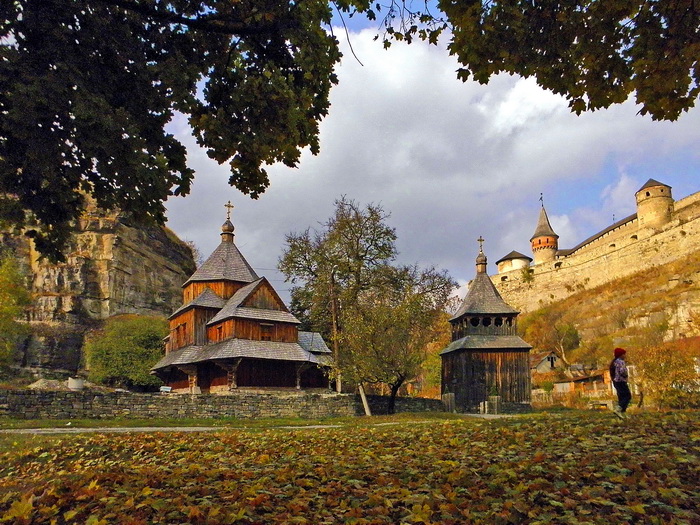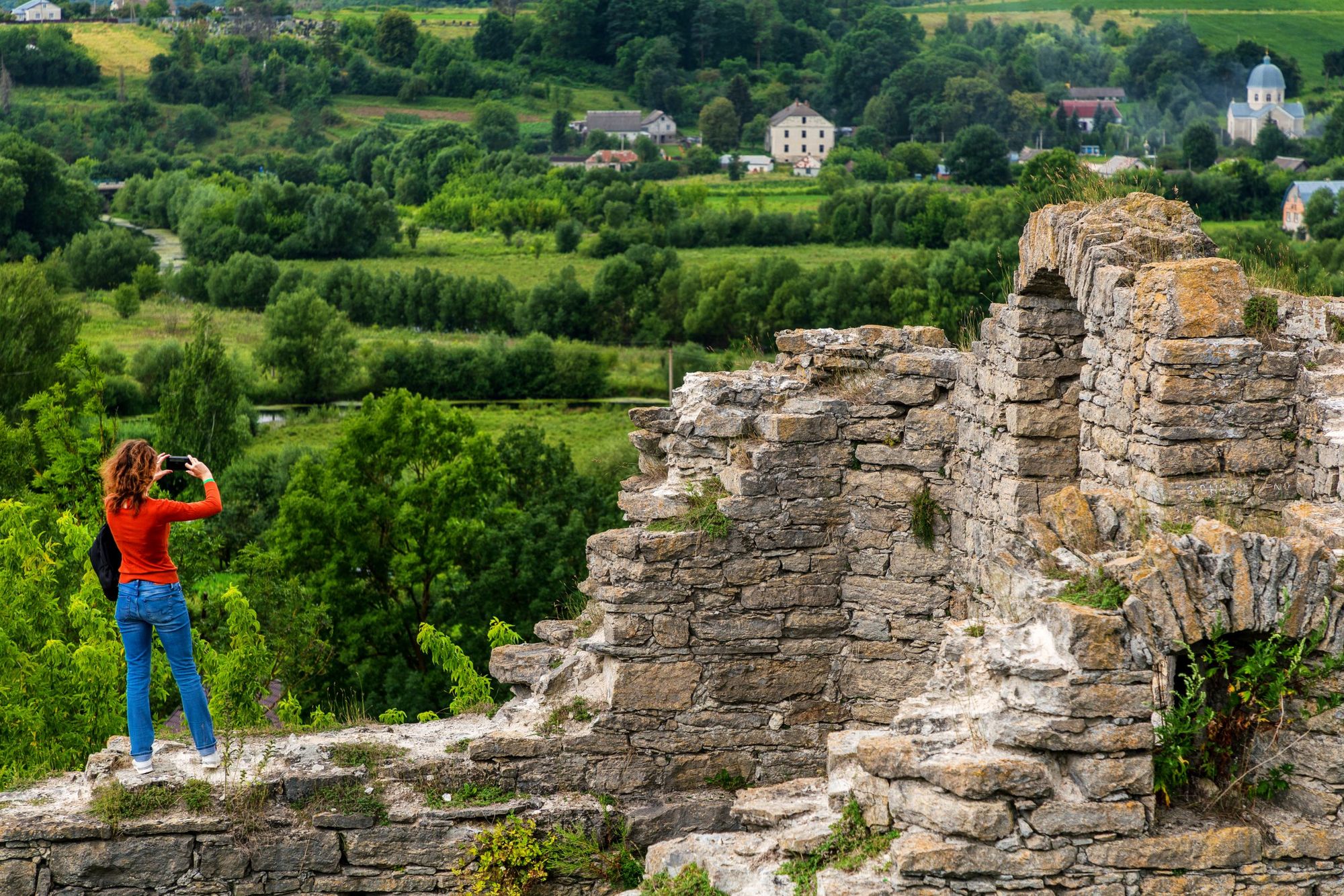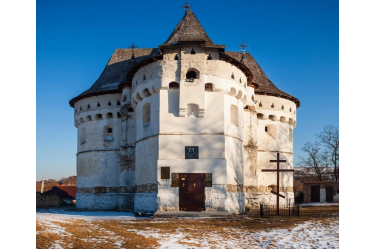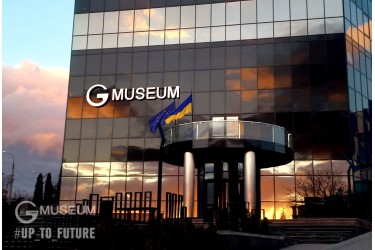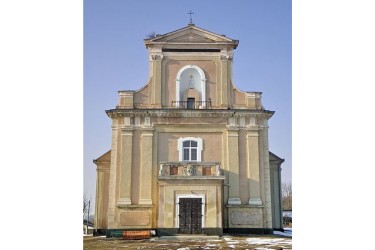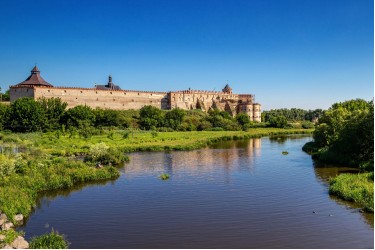There is ancient Sataniv, shrouded in legend, on the picturesque banks of the Zbruch River. Generous nature, limestone mountains, forests, healing springs, clean air, as well as the ruins of ancient fortress and monastery, synagogue, ancient cemetery, town gate, caves – in short, there is everything you need for a meaningful holiday.
The first stop of the tour in Sataniv
https://www.youtube.com/watch?v=t5vdQnbBE–g
Sataniv Castle
Sataniv stone castle was built sometime in the 15th century on the banks of the Zbruch River to protect the population from frequent Tatar invasions. Earlier on its territory there were also defensive fortifications. In the seventeenth century Sataniv became the property of the Seniavskyis family. They rebuilt the castle and strengthened it, giving it a pentagonal shape. Nowadays the castle has three corner towers and one round, which stands alone, as well as some fragments of the walls.
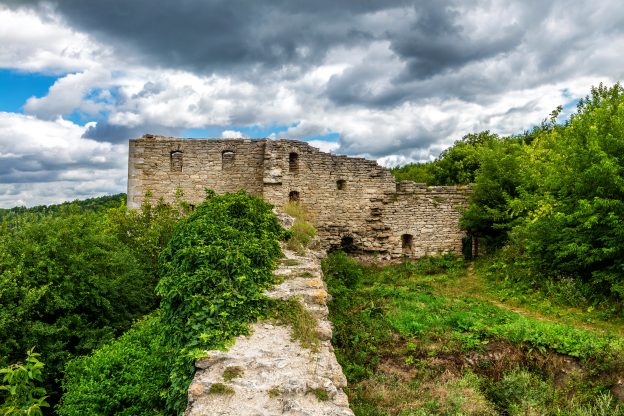
Synagogue
One of the oldest defensive synagogues in Europe is located in Sataniv. Since its inception the changes have hardly affected it and in 2014 it was overhauled. The synagogue had cannon fortifications and embrasures for firing in the walls. There are also underground passages in the synagogue. The building is a testament to the prosperity that Sataniv once reached.
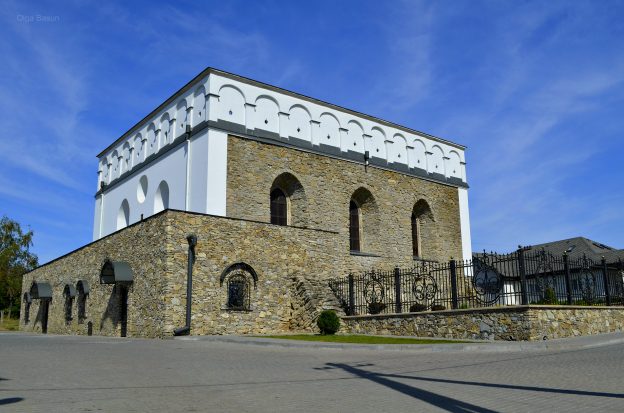
Town gate
The gate was built in the 15th century on the site of the ancient southern entrance to Sataniv. In the XVI century the gate was rebuilt. It joined the general system of the town defensive walls, connecting with Sataniv Castle. In the second half of the XVII century the gate was damaged. It was restored in 1724 with a serrated decorative parapet on white stone consoles.
Mill
For almost two centuries the Zbruch River has been running a mill in Sataniv, Horodok district, Khmelnytskyi region. This mill is famous for the whole district, grain rolls come here from the surrounding villages, even from the neighboring Ternopil region. But the mill in Sataniv is not only a mill. If necessary it becomes a small power plant – spare generator supplies electricity to the village and farms of Friendship special economy. The owner of the mill is miller Bronislav Yosypovych Lisovyk. His grandfather and father were millers, so he has family profession with ancient traditions.
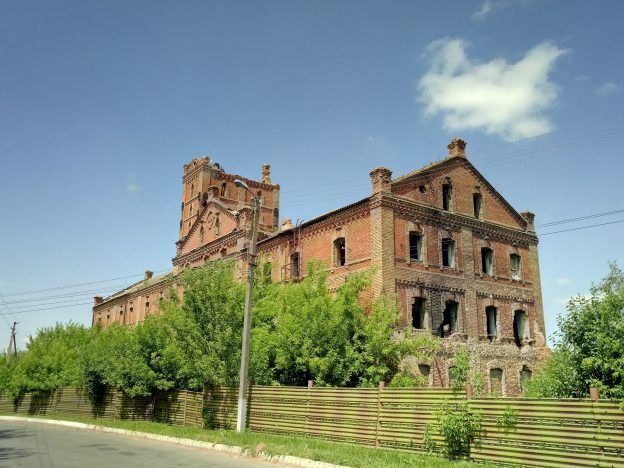
Sataniv waterfalls
Wonderful and mysterious place, where the river has several picturesque rapids (mini-waterfalls), is hidden near the mill in a small planting. There is even a colorful wooden bridge – the perfect place for a selfie.
Jewish cemetery
Ancient Jewish cemetery stretches between the sky and the village on a high mountain. The oldest tombstones here date back to the first half of the 16th century and the last burials date back to the late 1950s. The gravestones, buried in the ground and covered with moss and lichen are impressive. Symbolism of images on tombstones is very complex and interesting. There are reliefs with absolutely “non-kosher” animals very often. For example, eagle pecks a hare. Or bears carry a cut bunch of grapes.
Mineral springs
Sataniv resort area has well-rooms with healing mineral water. Sataniv is also called Podillia Switzerland: among the plains is a pyramid of hills, densely forested, there are river and lake in the valley. According to scientists, such unique and even somewhat anomalous corner is not only in Europe but throughout the globe. After all, it is found six mineral springs in a small area, completely different in composition, effect and unique in medicinal properties. Sodium chloride bromine water with a high salt content (38 gram per 1 liter) was found at a depth of 640 m. “Salt water”, or brine, can be compared in its properties with the salts of Karlovy Vary. But the main mineral spring is Zbruchanska Naftusia.
Artificial waterfall
The waterfall of artificial origin is located on the outskirts of Sataniv. Here is extremely beautiful nature, so people come here not only to swim, but also for picnics. The waterfall is loved by both locals and vacationers from neighboring resorts. Some resorts offer tours of Sataniv sights, including a visit to the dam. Nearby is Zbruchanska Naftusia mineral spring, known for its healing properties.
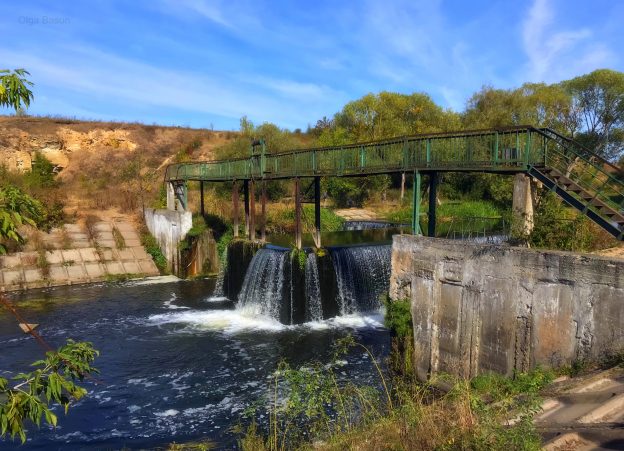
The Holy Trinity Convent of the XVII century
According to legend, the Holy Trinity Convent was founded in 839 by a monk from Athens. At first it was a cave where the monk lived. After other monks joined him the construction of the convent began. The monastery was closed more than once during the Soviet era. Moreover, the building miraculously survived – the baths were dismantled, the crosses were removed, the premises were reoriented to a granary, and the nuns who lived in the monastery were forcibly taken out of the town. Only in 1989 the reconstruction of the sanctuary began. Now here is the Holy Trinity Church, open to the faithful.
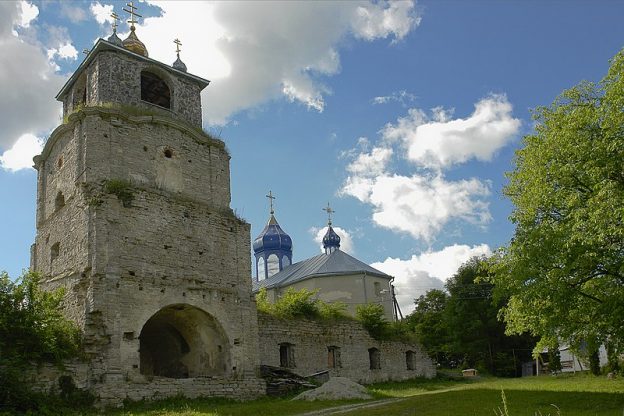
Tovtry ridge
Part of Tovtry ridge is a unique mountain massif, built by living organisms, not by tectonic processes. This is the Great Barrier Reef of the ancient Sarmatian Sea, which rolled its waves here 10-14 million years ago. The reef was formed mainly by bryozoa invertebrates. They, like corals, had a solid limestone skeleton. The “stone” algae Lithothamnium, which also accumulated a lot of limestone in their cells, as well as corals, sea urchins, Serpulidae, mollusks and other inhabitants of the ancient sea also worked on Tovtry.
Scythian mounds and Husykova Mountain
There are eight Scythian mounds near Sataniv. The largest and richest was looted by “black archaeologists”. This mound was not just large, but huge – 60 meters in diameter, the one who was buried here was clearly an important person. Unfortunately, the robbers left little to scientists.
Husykova Mountain is not far from Sataniv. It is named after the robber Husyk, who had a cave with treasure somewhere here. And there are several springs, near one of them you can still find a real laundry, which was an important element of infrastructure in ancient times and was actively used by peasants for washing clothes. The top of Husykova Mountain is crowned by the traditional rocky ridge and a huge iron cross.
Svitovyd or Zbrutskyi idol
Zbrutskyi idol is a sculpture of the IX century, one of the rare monuments of the Slavic pagan cult. This is a stone pillar, an idol, which probably depicts the Slavic god Rod-Svitovyd. It is found near Lychkivtsi village near Husiatyn in the Zbruch River (a tributary of the Dnister River) in 1848. This was facilitated by an abnormal drought – the head of the statue appeared above the surface of the Zbruch River waters due to a sharp drop in their level. Zbrutskyi Svitovyd is stored in Krakow Archaeological Museum. There is a copy of it in Sataniv region on the Pearl of Podillia sanatorium territory.
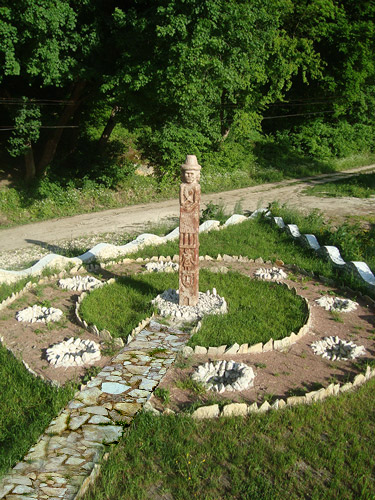
Sorrowful Jesus
This is the oldest monument in Ukraine dedicated to the liberation war, led by Bohdan Khmelnytskyi.
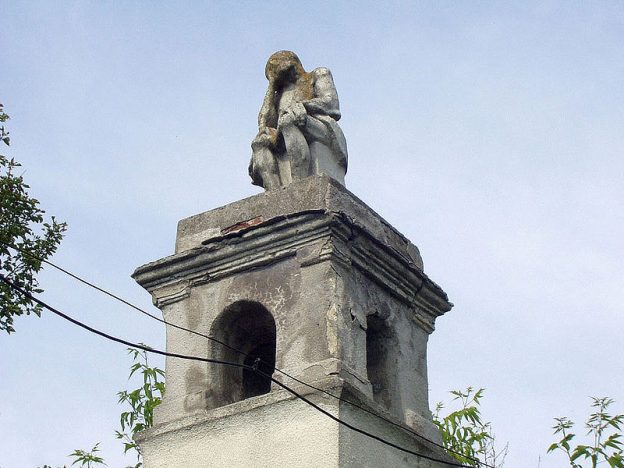
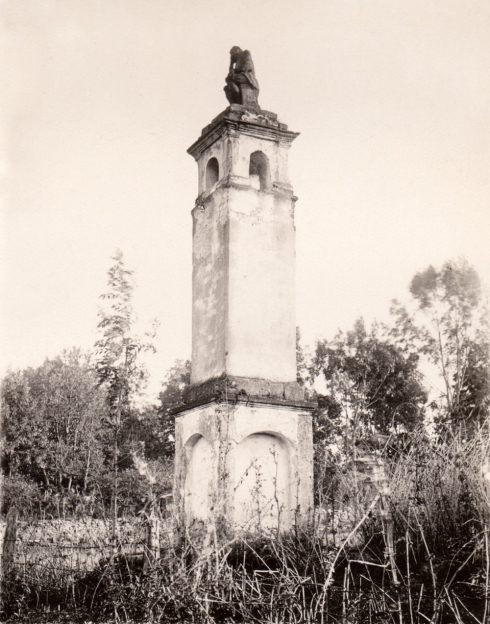
Returning to Khmelnytskyi

